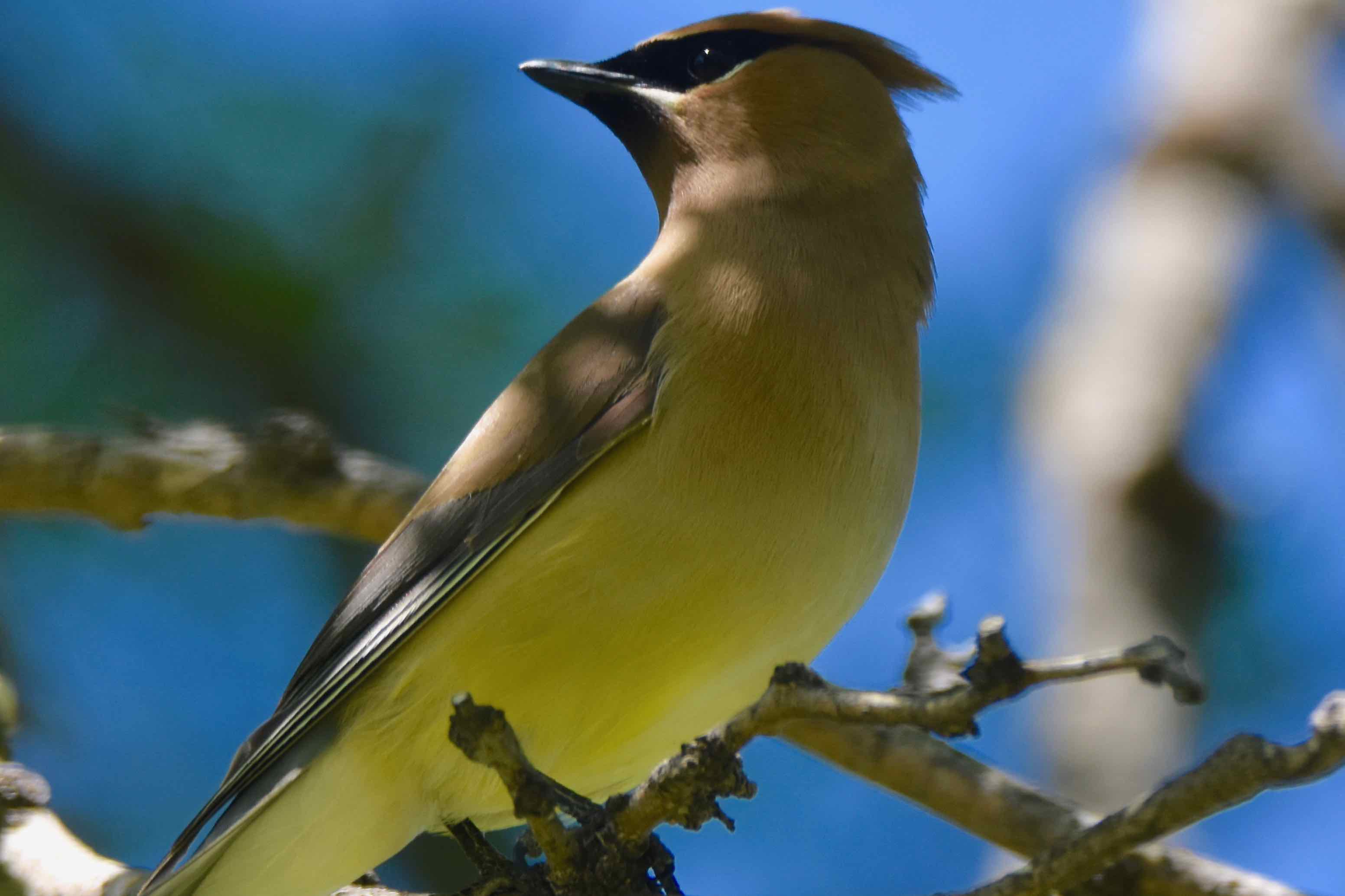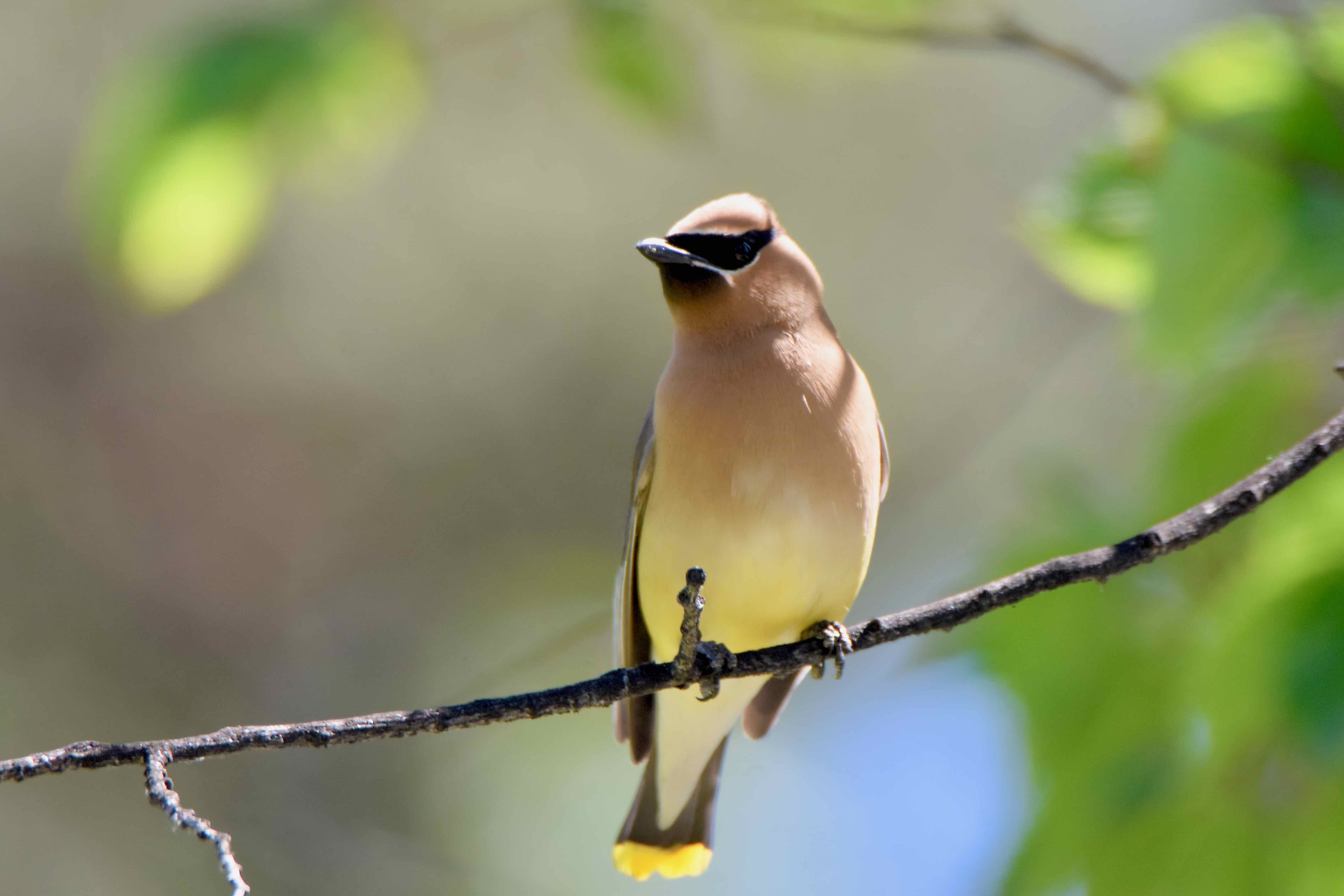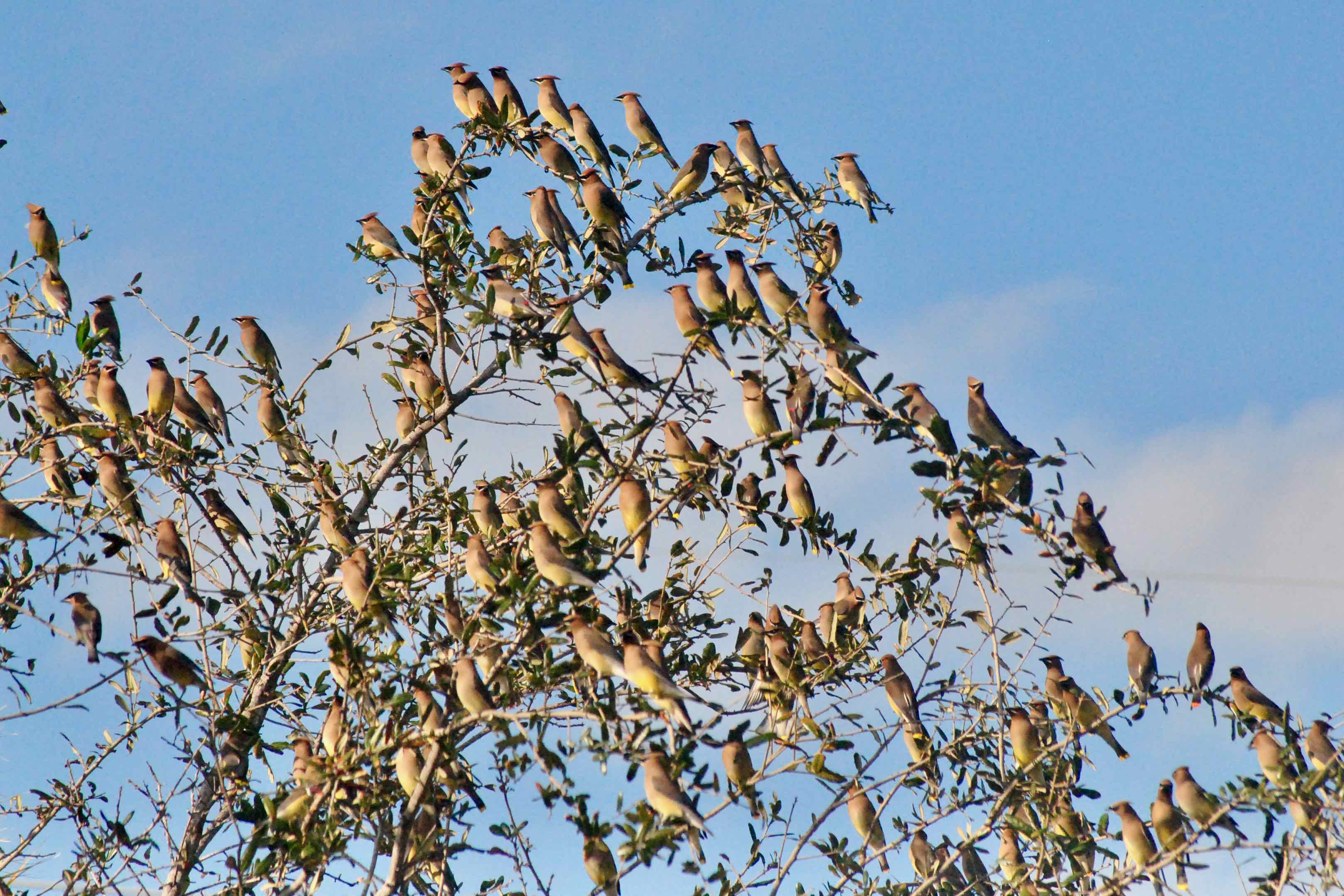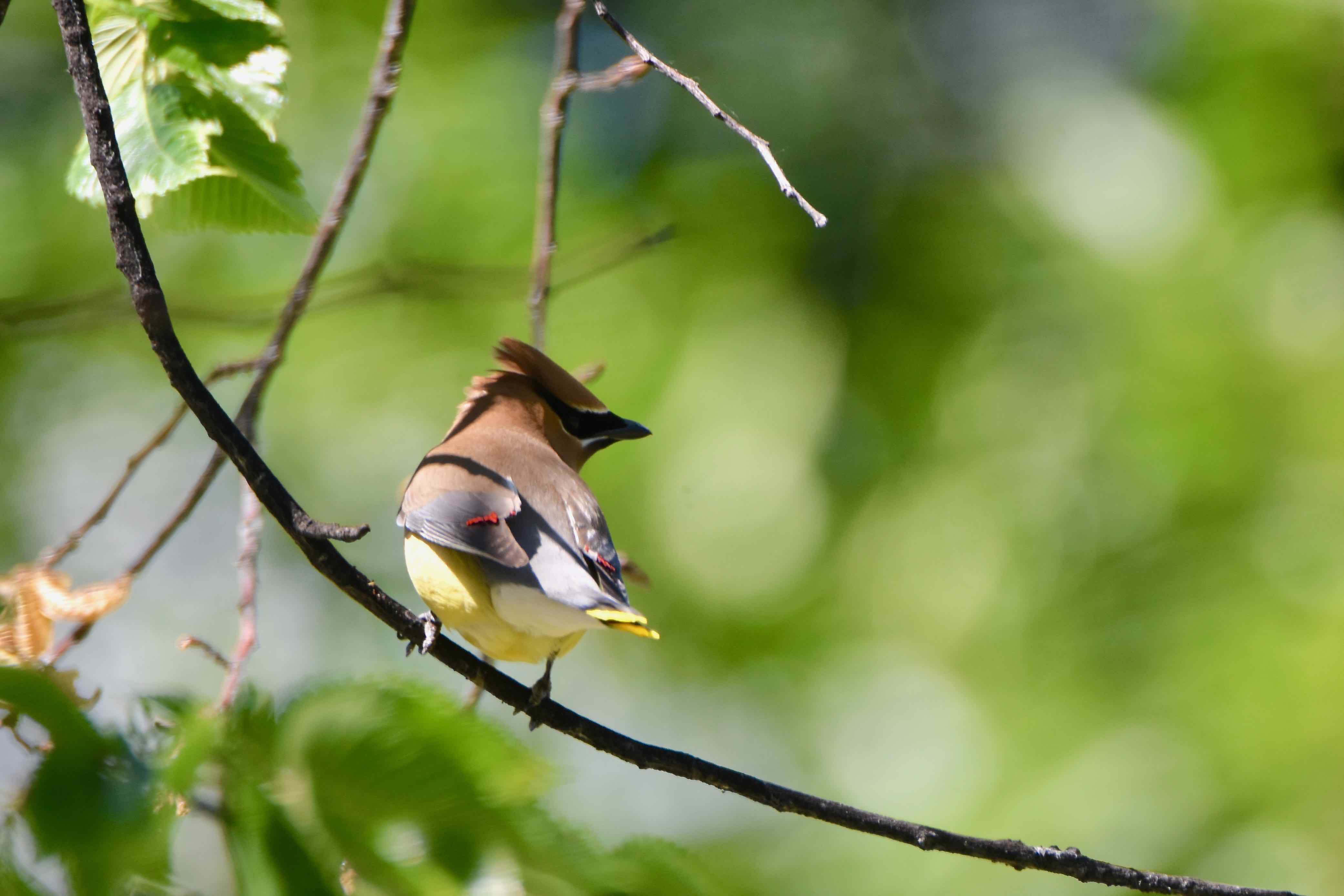
Cedar waxwing, photographed at Canyon Lake Park, Rapid City, South Dakota, in June 2017
To our eyes, the cedar waxwing has to rate among the coolest looking birds on the planet. But here in South Florida, you're not likely to find one lonesome cedar waxwing sitting on a limb. Rather, you'll see them by the dozens, hundreds, possibly even by the thousands.
Cedar waxwings, Bombycilla cedrorum, are winter visitors to South Florida. But instead of traveling singly or in a loose group, they make the migration in huge flocks, and those flocks remain together once they reach the Sunshine State. They're here in large numbers, but because they don't disperse like most migrators do, it's pretty much all or nothing. You see a zillion of 'em maurading for berries or you don't see any at all. We did see the zillion, picture below taken at the Delray Beach City Building in February 2014. We've seen these huge flocks several other times.
They are small to medium-sized birds, about six or seven inches in length, with a wing span that can touch a foot. They are pale brown from the head into the chest, melding into pale yellow underneath and gray above. They have a sharp black facemask, outlined in a bit of white, bold red highlights in the wings, the result of waxy secretions, and bright yellow tips in on the tail feathers. Ceder waxwings also have a distinctive crest on their heads, similar to cardinals or blue jays but they're not likely to be confused with either bird. One odd fact: According to Cornell, that red in the wings can be orange in some birds, depending on their diet.
Waxwings are a mix of migrators and stay-at-homes. They're found year round in New England, the MidAtlantic States, through parts of the Midwest and the Pacific Northwest. North of that belt, through the provinces of Canada, they're summer visitors. They will migrate in winter throughout southern parts of the United States, Mexico, Central America and the Caribbean and just across the Isthmus of Panama into South America.
They are fruit lovers, frugivores, as scientists would say, one of the few North American birds that can survive on fruit alone. They can become intoxicated from eating too many overripe berries. Fruit is such an important part of their diet that they will nest later than other birds to ensure a plentiful supply of their favorites to feed their young. But they do eat bugs in summer as well. Cedar waxwings will feast in farmers' fields. A U.S. Department of Agriculture report cited a limited study that found that birds were responsible for 17 percent to 75 percent of the damage done to Florida's early ripening blueberry crop, and most of that done by cedar waxwings. One Florida blueberry farmer was frustrated enough with the damage they did to her crops that she brought in an African Barbary falcon to deter the raiders. According to the USDA, falconry doesn't work. Scare tactics don't work either; startle the birds with loud noises and they'll fly off, perch nearby and return when the coast seems clear.
Waxwings' love of fruit is also responsible for a lot of their behavior — their nomadic ways and how social they are. It's even part of their courting ritual, with males offering berries (and other things) to females that have caught their eyes. If the female is interested, the item is passed back and forth several times until she finally consumes it. The pair will remain monogamous through breeding season.
Females take the lead in selecting a site for the nest and its eventual construction. According to Cornell, it can take a female cedar waxwing as long as 5 to 6 days and 2,500 trips or more to gather the material needed to build it. Clutches are usually three to five eggs, which take less than two weeks to hatch. Females probably handle all incubation duties. Both parents feed their offspring, which fledge after two to three weeks. The parents will have a second brood.
Cedar waxwings are members of Bombycillidae; their numbers are in good shape from a conservation perspective.



